Filter by

Time Perspective Theory; Review, Research and Application
This book is about time and its powerful influence on our personal and collective daily life. It presents the most comprehensive and up-to-date overview of contemporary knowledge on temporal psychology inspired by Zimbardo's work on Time Perspective (TP). With contributions from renowned and promising researchers from all over the globe, and at the interface of social, personality, cognitive an…
- Edition
- -
- ISBN/ISSN
- 978-3-319-07368-2
- Collation
- 26 b/w illustrations, 10 illustrations in colour
- Series Title
- -
- Call Number
- -

7th International Conference on University Learning and Teaching (InCULT 2014…
The book comprises papers presented at the 7th International Conference on University Learning and Teaching (InCULT) 2014, which was hosted by the Asian Centre for Research on University Learning and Teaching (ACRULeT) located at the Faculty of Education, Universiti Teknologi MARA, Shah Alam, Malaysia. It was co-hosted by the University of Hertfordshire, UK; the University of South Australia; t…
- Edition
- -
- ISBN/ISSN
- 978-981-287-664-5
- Collation
- -
- Series Title
- -
- Call Number
- 370.15 SEV s
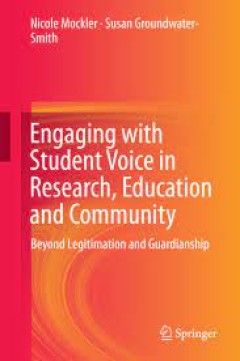
Engaging with Student Voice in Research, Education and Community Beyond Legi…
This work interrupts the current “consulting students” discourse that positions students as service clients and thus renders more problematic the concept of student voice in ways that it might be sustained as a democratic process. It looks at student voice holistically across realms of classroom practices, higher education, practitioner inquiry and policy formulation. The authors render pro…
- Edition
- -
- ISBN/ISSN
- 978-3-319-01985-7
- Collation
- 2 b/w illustrations
- Series Title
- -
- Call Number
- -
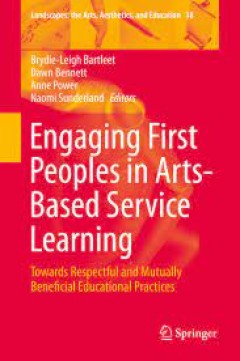
Engaging First Peoples in Arts-Based Service Learning Towards Respectful and…
This volume offers educators, higher education institutions, communities and organizations critical understandings and resources that can underpin respectful, reciprocal and transformative educative relationships with First Peoples internationally. With a focus on service learning, each chapter provides concrete examples of how arts-based, community-led projects can enhance and support the qual…
- Edition
- -
- ISBN/ISSN
- 978-3-319-22153-3
- Collation
- XI, 275
- Series Title
- -
- Call Number
- -

Motivation in Online Education
This work explores and explicates learner motivation in online learning environments. More specifically, it uses a case-study approach to examine undergraduate students’ motivation within two formal and separate online learning contexts. In doing so, it recognizes the mutually constitutive relationship of the learner and the learning environment in relation to motivation. This is distinctive …
- Edition
- 1
- ISBN/ISSN
- 978-981-10-0698-2
- Collation
- XXIII, 134
- Series Title
- -
- Call Number
- -

Motivating Cooperation and Compliance with Authority:The Role of Institutiona…
This volume explores the various ways in which trust is thought about and studied in contemporary society. In doing so, it aims to advance both theoretical and methodological perspectives on trust. Trust is an important topic in this series because it raises issues of both motivation and emotion. Specifically, notions of trust and fairness motivate individuals to behave in a manner they deem ap…
- Edition
- 1
- ISBN/ISSN
- 978-3-319-16150-1
- Collation
- XIII, 220
- Series Title
- Nebraska Symposium on Motivation
- Call Number
- -
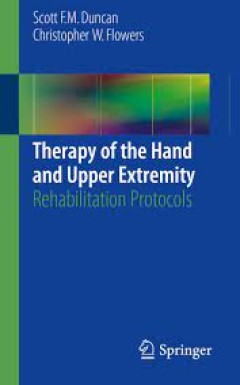
Therapy of the Hand and Upper Extremity
Presenting over 100 rehabilitation protocols for the hand and upper extremity in an easy-to-use, step-by-step format, this practical reference provides surgeons and therapists alike with a go-to source for the therapy technique or strategy appropriate for their patients. Covering injuries from the shoulder, elbow, wrist, hand and fingers, each protocol includes bullet-pointed steps in daily or …
- Edition
- -
- ISBN/ISSN
- 978-3-319-14412-2
- Collation
- XVI, 282
- Series Title
- -
- Call Number
- -
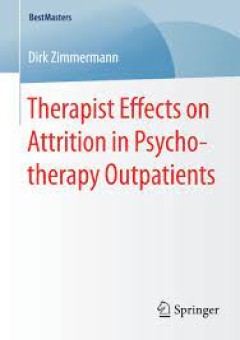
Therapist Effects on Attrition in Psychotherapy Outpatients
Dirk Zimmermann illustrates that some therapists significantly differ concerning their average dropout rates. He points out that initial impairment is a strong predictor of early termination. Different dropout criteria as well as various explaining variables on patient and on therapist level were assessed. Premature treatment termination is a common phenomenon in psychotherapy with mean dropout…
- Edition
- -
- ISBN/ISSN
- 978-3-658-08385-4
- Collation
- 2 b/w illustrations
- Series Title
- -
- Call Number
- -

Theories in and of Mathematics Education Theory Strands in German Speaking C…
This survey provides an overview of German meta-discourse on theories and mathematics education as a scientific discipline, from the 1970s to the 1990s. Two theory strands are offered: a semiotic view related to Peirce and Wittgenstein (presented by Willibald Dörfler), and the theory of learning activity by Joachim Lompscher (presented by Regina Bruder and Oliver Schmitt). By networking the tw…
- Edition
- -
- ISBN/ISSN
- 978-3-319-42589-4
- Collation
- Springer Cham
- Series Title
- -
- Call Number
- -
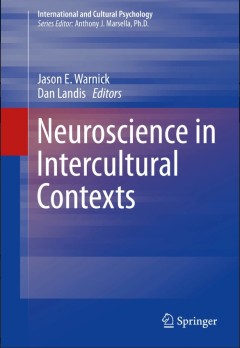
Neuroscience in Intercultural Contexts
This breakthrough volume brings together cultural neuroscience and intercultural relations in an expansive presentation. Its selected topics in reasoning, memory, and other key cognitive areas bridge the neuroscience behind culture-related phenomena with the complex social processes involved in seeing the world through the perspective of others. Coverage ranges beyond the familiar paradigms of …
- Edition
- 1
- ISBN/ISSN
- 1571-5507
- Collation
- XXX, 263
- Series Title
- International and Cultural Psychology
- Call Number
- -
 Computer Science, Information & General Works
Computer Science, Information & General Works  Philosophy & Psychology
Philosophy & Psychology  Religion
Religion  Social Sciences
Social Sciences  Language
Language  Pure Science
Pure Science  Applied Sciences
Applied Sciences  Art & Recreation
Art & Recreation  Literature
Literature  History & Geography
History & Geography